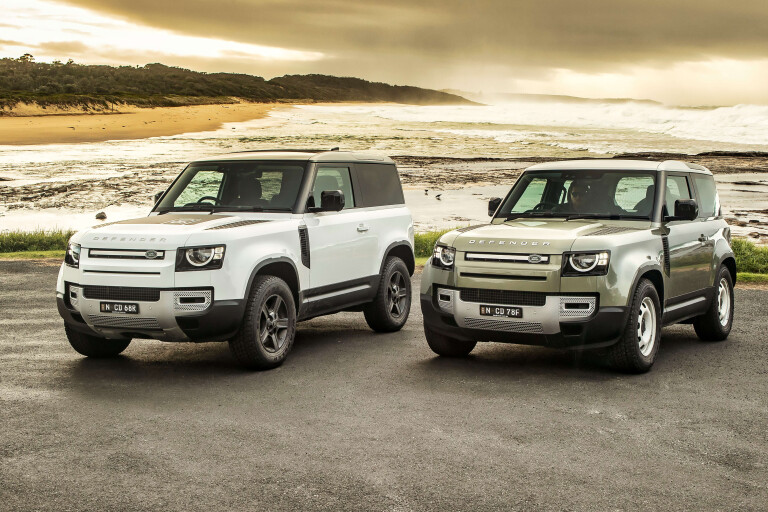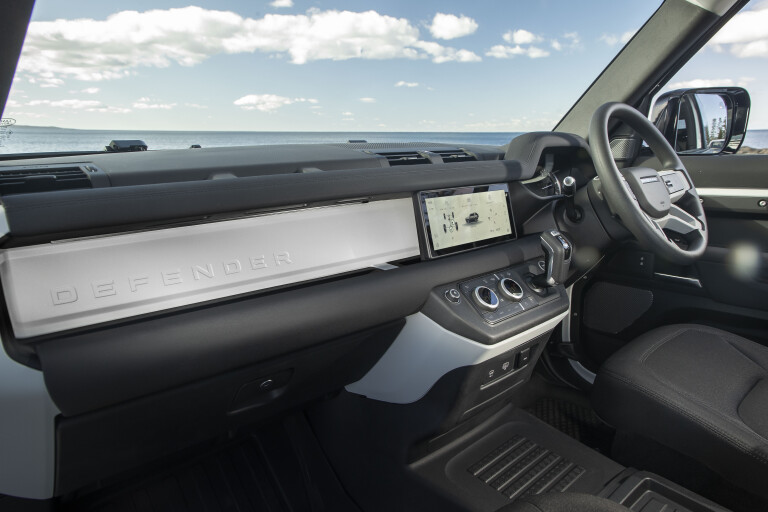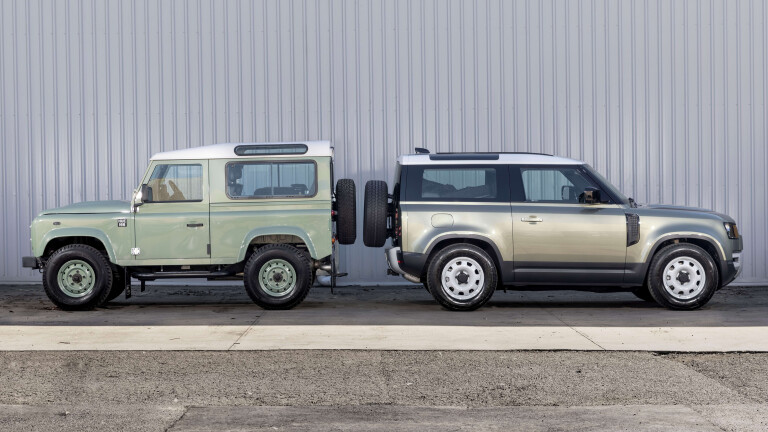
Snapshot
- D200 engine makes local debut
- P300 90 starts out as cheapest variant at $74,516
- V8 exclusivity will cost $210,716 plus on-roads
The launch of the new Defender 90 is here, with the three-door Land Rover joining its five-door Defender 100 sibling in the Australian market.
Featuring a new chassis and overhauled styling from the previous Defender, the new model is looking to bolster Land Rover's local sales as the Defender 110 leads the way for JLR locally.
Starting out at just under below $75,000 before on-road costs, the range-topping V8 will set buyers back over $200,000, rivalling some of the top-shelf Range Rover Sport models.

Pricing
The 2022 Land Rover Defender 90 range features five different engines across six trim variants, leading to eight possible combinations of powertrain and other options.
All prices listed are before on-road costs.
- Defender 90 P300 – $74,516
- Defender 90 D200 – $81,166
- Defender 90 S P300 – $83,346
- Defender 90 S D250 – $90,326
- Defender 90 SE P400 – $100,326
- Defender 90 XS Edition P400 – $110,516
- Defender 90 X P400 – $141,356
- Defender 90 V8 P525 – $210,716

Features
All Defender 90 variants are available with the same standard equipment which includes features such as:
- Heated, electric, power fold door mirrors
- Auto-dimming rearview mirror
- LED headlights and tail-lights
- 18-inch Style 5093 gloss white steel wheels
- 18-inch full-size spare wheel
- Goodyear Wrangler AT/S tyres (all-season also available)
- Coil springs (air suspension optional)
- Pivi Pro 10-inch infotainment touch screen (11.4-inch screen optional)
- DAB radio
- Apply CarPlay and Android Auto
- Online pack with data plan
- 12-volt power in rear loadspace
- Rubber cabin flooring
- Keyless entry
- Tyre pressure monitoring system
Land Rover offers a range of exterior trim options for its Defender 90 variants at a premium to potential buyers.
- Black contrast roof – $2171 (90, S, SE)
- White contrast roof – $2171 (90, S, SE)
- Sliding panoramic roof – $4490 (90, S, SE)
- Folding fabric roof – $4810 (90, S, SE), $330 (X)
- Black roof rails – $940 (all except V8)
- Black exterior pack – $1400 (90, S, SE)
- Extended black exterior pack – $1543 (X, V8)
- Bright exterior pack – $2205 (90, S, SE)
- Extended bright exterior pack – $2646 (90, S, SE)
- Signature graphic – $337 (all)

Optional packages
In addition to the abundance to individual options available across the Defender 90 variants – which includes 12 wheel options and six interior trim options – Land Rover offers a range of different packages which can be added, though specific prices have not yet been offered up.
Explorer Pack
- Wheel arch protection
- Front and rear classic mudflaps
- Expedition roof rack
- Raised air intake
- Spare wheel cover
- Matte black bonnet decal
- Exterior side-mounted gear carrier
Adventure Pack
- Bright rear scuff plate
- Portable rinse system
- Front and rear mudflaps
- Integrated air compressor
- Spare wheel cover
- Seat backpack
- Exterior side-mounted gear carrier
Country Pack
- Bright rear scuff plate
- Portable rinse system
- Wheel arch protection
- Front and rear classic mudflaps
- Full height loadspace partition
Urban Pack
- Bright rear scuff plate
- Front undershield
- Bright metal pedals
- Spare wheel cover

Engine, drivetrain and fuel economy
All of the five available engines are mated to an eight-speed torque-converter automatic transmission, coupled to a twin-speed transfer box with high and low range.
The four-wheel-drive system also includes Land Rover's Terrain Response technology, allowing the driver to change settings between presets in the system depending on what kind of surface they are driving on with help from the electronic centre and rear differentials.
Below is a breakdown of the five engines available with power, torque and fuel consumption figures.
- D200 – 3.0-litre, turbocharged inline six-cylinder diesel with 48-volt mild-hybrid assistance, 147kW/500Nm, 7.9L/100km
- D300 – 3.0-litre, turbocharged inline six-cylinder diesel with 48-volt mild-hybrid assistance, 183kW/520Nm, 7.9L/100km
- P300 – 2.0-litre, turbocharged inline four-cylinder petrol, 221kW/400Nm, 10.1L/100km
- P400 – 3.0-litre, turbocharged inline six-cylinder petrol with 48-volt mild-hybrid assistance, 294kW/550Nm, 9.9L/100km
- P525 – 5.0-litre, naturally aspirated V8, 386kW/625Nm, 12.8L/100km

Dimensions
With almost half a metre chopped off the 110's wheelbase, the Defender 90 is 435mm shorter than the bigger off-roader resulting in a body length of 4583mm and a wheelbase of 2587mm, still sharing the same 2008mm width and 1967mm height.
On the standard coil springs, all Defender 90s have a 31 degree approach angle, 25 degree ramp angle and 38 degree departure angle thanks to its 225mm ground clearance (increased up to 291mm with air suspension).
A side air intake means the Defender can wade at depths up to 850mm.

Safety
While no ANCAP crash test results have been released for the three-door Defender, its bigger five-door sibling scored five stars when it was tested in 2020, rating particularly well for child and adult occupant protection.
The Defender 90 features a variety of safety technology to keep its occupants and other road users safe, including:
- Emergency braking
- Blind-spot assist
- 3D surround camera
- Clear exit monitor
- Adaptive cruise control
- Lane keep assist
- 360° parking aid
- Rear collision monitor
- Rear traffic monitor
- Traffic sign recognition and adaptive speed limiter
- Wade sensing
- Driver condition monitor
- Rear ISOFIX

Warranty and servicing
As with the rest of the Land Rover model line-up, the Defender 90 is covered by a five-year/unlimited-kilometre warranty with a five-year guaranteed future value assurance included.
Five-year service and roadside assistance packages are also available for the range, starting at $1950 for the 2.0-litre petrol, $2650 for the 3.0-litre petrol and diesel engines before reaching $3750 for the top-shelf 5.0-litre V8.
Availability
Land Rover is currently taking orders for the Defender 90 but has warned of delays up to the first quarter of next year due to production issues, owing in part to the semi-conductor shortage throughout the automotive industry.

COMMENTS